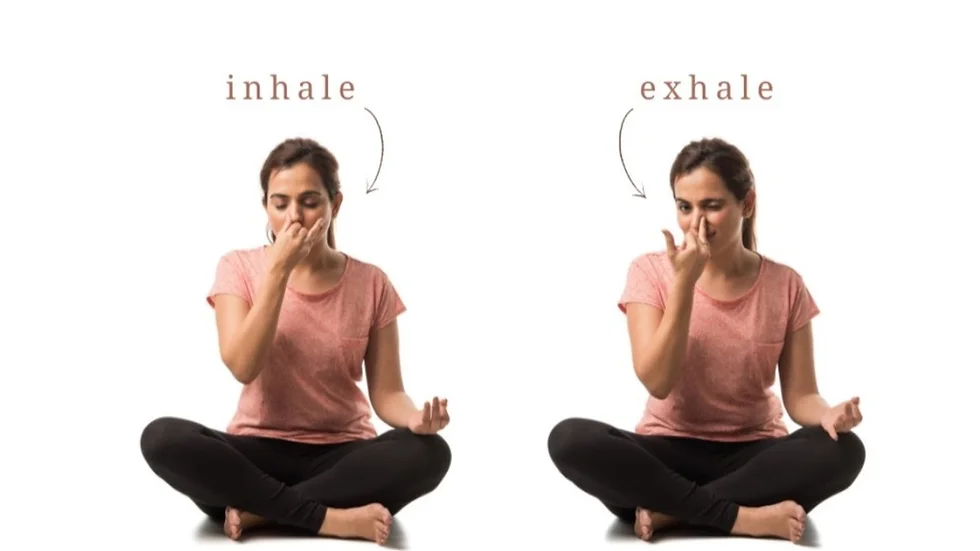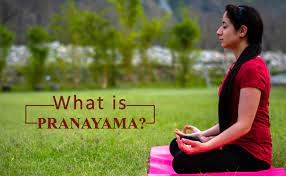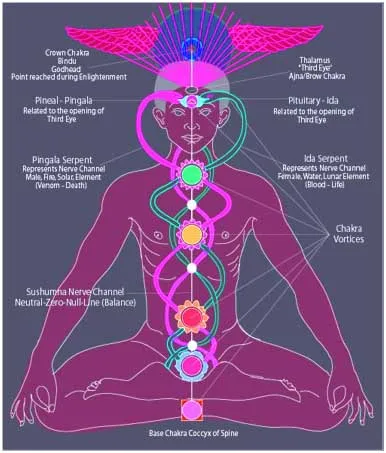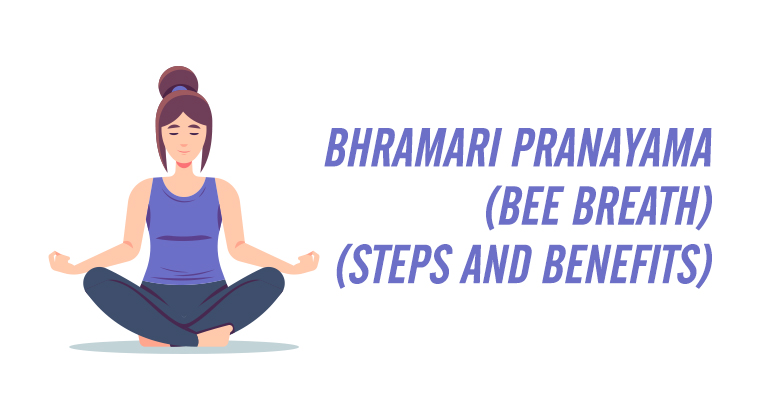What Is Difference Between Surya Bhedana And Chandra Bhedana Pranayama?
You should know a bit about Pranayama, before you start studying its types. As the name suggests, Pranayama is the expansion of breath. It is basically a set of ancient breathing practices, which involves proper control and manipulation of your breath. You will find out from ancient texts and scriptures, that Pranayama is the secret behind the longevity of the sages and seers from olden times. It is also listed as the Fourth limb, in Patanjali’s Yoga Sutras. It is stated in the sutras, that you actually control your mind, with the help of proper breathing exercises.
According to yogis, you can also control the inner forces, or the flow of ‘Prana’ within you, with the help of Pranayama. If you put Pranayama to good practice, you can change the course of your health, both mentally and physically. You can learn about the same in detail, with certification at Hrishikesh Yoga School. The school offers the 200 hour yoga teacher training in Rishikesh, which will take you through the best times of your life.
Before, you start with the different types of Pranayama, as mentioned above, it makes sense to study the background of breathing and the energy flow in the nostrils in general.

Energy Flow Through The Nostrils
The nadi that ends in the left nostril is called Ida, and the one that ends in the right nostril is called Pingala. The central nadi which coincides with the spine is the Sushumna. The activity of these nadis shows up in the way, breath flows. When the Ida is active, more breath flows through the left nostril, and when Pingala is active, breath flows through the right. And, when the central nadi is active, breath flows through both in the same ratio. The energy which flows through the right nostril is called masculine energy and the one that flows through the left is feminine. The sun is the ruler of the right nostril, and in dominant state, your logical reasoning and thinking is affected. It is connected with the left side of the brain. If you want to undertake activities, that involve strength and stamina, you should take up the same when the right nostril is active. You will further learn about the nadis in the yoga teacher training in Rishikesh.
The energy which flows through the left nostril is feminine energy. It affects the right side of the brain, and is ruled by the moon. It deals with the emotional and psychological state of mind. If this side is more dominant, you should take up tasks that are introspective and receptive in nature. Finally, when the energy flows through both nadis and the breath flows equally through the nostrils, your brain is in balance. It is one of the best times or state, when you should take up a meditative stance.
Now, that you have understood what each nostril connects to, you can find out more about the process of Pranayama.
Pranayama Process
The pranayama cycle has three parts. They are Rechaka, Puraka, and Kumbhaka. Puraka is the first thing that you do, that is inhale. Rechaka is the exhalation. Thirdly, Kumbhaka is the retention phase. When you breathe through one nostril, you imbibe the qualities of that channel, and vice versa. So, this seems to be the right time to introduce two of the most important Pranayama practices – Surya Bhedana and Chandra Bhedana.
Surya Bhedana points towards the right nostril breathing, whereas Chandra Bhedana pints towards Left nostril breathing. Surya Bhedana aims to pierce through the Pingala nadi and create more energy, warmth, and will power. On the other hand, Chandra Bhedana aims to pierce through the Ida nadi, and cools the body and parasympathetic nervous system. It also relieves mental tension and slows down the movement. It has a positive impact on Pitta-related diseases. If you practice yoga, you will get a clear understanding of all the cycles and types of breathing. Moreover, the energies of the place is also ideal for yoga practice.
How To Do Surya Bhedana Pranayama?
You can learn about the breathing practice at the Rishikesh Yoga School. You can learn about this yogic process right here.
- You need to sit somewhere, where no one will disturb you. You need to choose a meditative pose like Sukhasana, or Padmasana. Furthermore, you can sit on a chair, with a backrest.
- You need to sit with your legs crossed. Maintain a straight spine and the chin should be parallel to the ground. The shoulders should be rolled out. You can keep your eyes closed or open, according to your comfort levels.
- Now, practice the Gyan mudra with the left hand, and keep it on your knees. Additionally, you should practice Vishnu mudra with the right hand, to practice Surya Bhedana.
- To make the Vishnu mudra, you have to bring the tips of the index finger and the middle finger, in contact with the internal base of the thumb. The other fingers remain stretched outwards.
- In the next step, you need to place the hands near the nose in a manner, in which the thumb closes the right nostril and the last two outstretched fingers close the left nostril.
- Now, release the thumb very slowly, and inhale air through the right nostril. You must maintain a steady flow of breath.
- Continue to inhale for some time, and then close both the nostrils and hold the position for some time. Now, after 10 seconds approximately have elapsed, you must exhale through the left nostril.
You must practice at least 5 rounds of this breathing technique, in each session, for the maximum results. According to Hatha Yoga texts, this practice brings along with it, several benefits.
They are as listed below:
- It aids in the cleansing of the sinuses, in the first place.
- It also increases your digestive fire.
- You will also get relief from Vata disorders.
- It will invigorate and energize your whole body.
- Your Pingala nadi gets activated and functions better. So, the utilization of Pranic energy also improves manifold.
- If you have low blood pressure, you will benefit from this practice.
When you undertake any sort of yogic practice, it is important for you to note that, there may be contraindications as well.
- If you suffer from high blood pressure, then you must not practice Surya Bhedhana.
- If you recently undergone any brain surgery, then also you must refrain from practicing this Pranayama.
- In case of heart and abdominal surgeries, it is best to avoid it for some time.
- It should also be avoided, if you have fever.
- You can practice it 4-5 hours, after having a meal.
You can perform this 3-5 minutes, ideally in the morning. However, you can practice this later in the day as well, on an empty stomach. However, refrain from its practice after sundown, as you will find it difficult to unwind.
How To Do Chandra Bhedana Pranayama?
You can head to the best yoga school to learn about Chandra Bhedana. It is one of the calming practices, in comparison to the Surya Bhedana.
- You need to sit in a meditative pose, on a mat. If you have issues with sitting on the floor, you can sit on a chair, with proper back support.
- Maintain an alert stance, with the spine straight, and the chin parallel to the ground. Your shoulders should be rolled out and chest should protrude in front. You can keep the eyes closed or shut, as per your convenience.
- You have to make the Gyan mudra with the left hand, and Vishnu mudra with the right hand, as before.
- Now, you need to place the hands and fingers near the nose, with the thumb closing the right nostril and the stretched fingers closing the left nostril.
- Release the last two fingers and inhale slowly through the left nostril. You have to do it continuously and rhythmically.
- After you are done inhaling for some time, you must close the nostrils again. You must ensure to retain the breath for about 10 seconds.
- After removing the thumb, you must exhale the retained air through the right nostril. You can practice 5 rounds of the Chandra Bhedana.
Here are a few benefits of this practice.
- This practice is extremely beneficial for all those who suffer from high blood pressure, stress, and chronic heart issues.
- It also regulates the flow of bile, and cures digestive issues.
- It is also beneficial for all those who have some sort of Pitta disease.
- If you suffer from heart burn, then also you must practice this. It will help you to get over it.
- It brings tranquillity to the mind.
- It also improves the flow of ‘Prana’, through the Ida nadi.
- In Ayurveda, left nostril breathing is used to facilitate reduction in fever.
- It is one of the methods, used in Tantric sciences, to awaken the dormant kundalini.
- It is also said to activate the Parasympathetic nervous system.
- It is also said to improve spatial memory.
- It also manages immunity responses.
- You can overcome anxiety and cool your mind.
Just like the Surya Bhedana, many of you may not be able to practice this. Read about the contraindications mentioned here.
- If you suffer from Asthma or any other respiratory ailment, you must not practice this Pranayama.
- If you suffer from low blood pressure, you must not practice this.
- It is to be avoided in the winter season as well.
- You should not eat right before or after the session.
The right time to practice Chandra Bhedana is also important. During the summer months, you can practice it in the morning. In the winter months, you can practice it after the sun rise, indoors.
These are the two yogic breathing practices that can transform your life, physically, mentally, as well as emotionally. You should always keep in mind the guidelines for the practices. It will help in yielding the best results. One of the best places where you can learn and master both these Pranayama practices is Hrishikesh Yoga School. The best teachers, having decades of experience will show you the right techniques and will help you to make it a part of your life. You will learn more about the differences at the school. However, the above information also truly fulfils your knowledge requirement about the differences.





